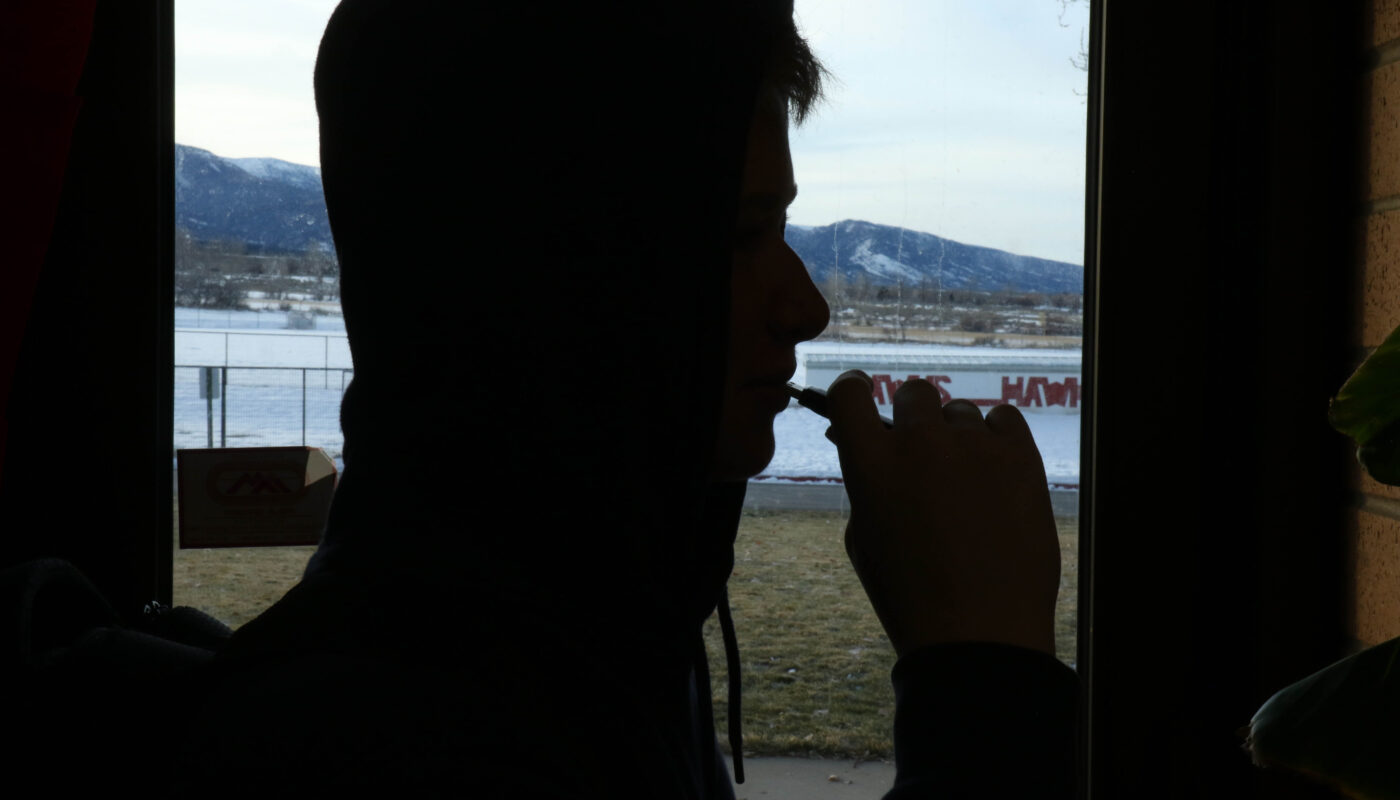For privacy and safety, the names of all minors involved have been changed.
The issue of teenage vaping has been on the rise in the past few years, and NS is not immune to its influence.
In 2024, the Food and Drug Administration conducted their Annual National Youth Tobacco Survey where they found that just over 10 percent of high school students reported a current use of tobacco products. Of that number, almost 80 percent use an e-cigarette, otherwise known as a vape.
Vapes are defined by the Centers for Disease Control and Prevention as, “battery-operated devices that heat a liquid and produce an aerosol. They come in many shapes and sizes, and they typically contain nicotine.” Nicotine is an addictive substance that produces dopamine in the brain but can have serious side effects on both brain development and physical help.
“We are concerned about the health of kids,” Assistant Principal Ryan Syme said. “Vaping is dangerous… if you’re not fully developed, it messes up your lungs, and any kind of stimulant, like nicotine, can really mess with your brain development.”
Nearly all high school students who vape currently are introduced to it during a time when they are most susceptible to the risk of addiction.
“I was influenced by friends,” said Rose, a student who currently vapes. “It was middle school, in seventh grade, and I was in a big group that did all of that and then I got into it too. There was no specific reason, they were like, ‘Just try this’ and I said, ‘What does it do?’ and they said ‘Nothing really, it’s just smoke.’ It was usually just smoke and tricks but then it became an addiction.”
Not only are there students who actively vape, but most vapes they use come from peers. Teenagers aren’t only buying vapes, but are also in the business of selling them.
“I had a business opportunity and I took it,” student Daisy said. “I was selling maybe three or four [vapes] a week, anywhere from $25 to $35 depending on the brand. I didn’t get to keep all of it though… I was not the one going to the stores directly and getting it. I was working for another person, so they would actually get it and would take profit off of it, maybe like $10. But hey, 10 bucks is 10 bucks.”
For some, vaping is a means to socialize; that is how many are exposed for the first time.
“I’ve never owned vapes myself,” student Lily said, “but I’ve had friends that would say, ‘Do you want a hit of this?’ and I’d be like, ‘Yeah, sure’… I don’t vape anymore because I just think that it’s really dumb.”
Not only does vaping affect the person participating, it can have negative repercussions for the people around them. Iris is a student who, for years, has had friends and family pressure her and make vaping a common occurrence in her life. This has given her a front-row seat to the fallout that comes with vaping.
“One of my friends,” Iris said, “they started with just vaping and stuff then it moved to alcohol and now they’re just stuck in this slump where it’s all they do every day. Now they’re losing friends over it because no one wants to be around it.”
Students are exposed almost daily because school bathrooms have become a common place for students to vape during the school day.
“All the time,” Lily said. “You walk into the bathroom to go pee during class and there’s always like a ton of girls in there with their vapes in hand, and they all pile in with like four to a stall and pass it around.”
Despite vaping on school grounds being illegal, it continues to be an issue for administration to stop.
“When we know that vaping is happening in the bathroom,” Syme said, “then we utilize the cameras to see who was coming out of the bathroom and do an investigation… usually only one person gets thrown under the bus.”
Some students know the likelihood of being caught vaping on campus and instead wait to vape elsewhere. Others simply aren’t worried about the consequences.
“I don’t really care if I get caught, but I’d rather just wait ‘til I get home,” Rose said. “I can wait. I don’t have to hit it every five seconds, so I just leave it at home. And plus, I don’t want [my friends] to use it all, let’s just say that.”
Those caught on school grounds face the consequences set up at NS.
“Vapes with just nicotine, the Juvenile Justice System doesn’t touch,” Syme said, “so we have to do a school-level intervention, and it’s usually just restorative practices.”
Restorative practices are actions put in place by a school to correct behavior. In the case of being caught vaping, those may include working with a janitor after school to clean, calling parents and setting up a home-based solution, and one-on-one counseling to help with quitting altogether.
“I’ve talked to a couple of kids who said it’s really hard to quit,” Syme said, “and that actually scares me more than just trying to come up with some punishment for these kids. Maybe helping them through either our wellness center or some other third parties will help them understand why quitting is what is keeping them safe.”
The aspect of safety is crucial when it comes to teenagers because of how harmful vaping is physically.
“If you hit it too much then you feel sick and it’s hard to be active,” Rose said. “You’re killing your lungs, it’s a real thing. Being active is hard when you smoke.”
As with any addiction, quitting is difficult both physically and mentally.
“When I don’t have it,” Rose said, “I feel like I need it more. It’s like an urge, like a real addiction. If it’s there, and it’s accessible, then you’re going to hit it and it’s hard to stop, very hard to stop.”
Those who know how difficult it is to quit vaping or any addiction, often feel that they wish that they had never started in the first place.
“There’s other reasons [to quit],” Rose said. “It doesn’t do anything for me and there’s no reason for me to be so addicted to a little thing. I just think that nobody should do it, it’s not worth it. I wish I never did it… just don’t start.”
The main focus of teenage vaping is helping educate them on the dangers of vaping while providing resources for those who need them to break the habit.
“It’s not always just about catching them to punish them,” Syme said, “we do want to help kids. This is a habit; it’s hard and obviously extremely addictive based on how the chemicals in the vape interact and are ingested into the body. And that scares me more than just some kids breaking the rules, we want to keep kids healthy and safe.”




